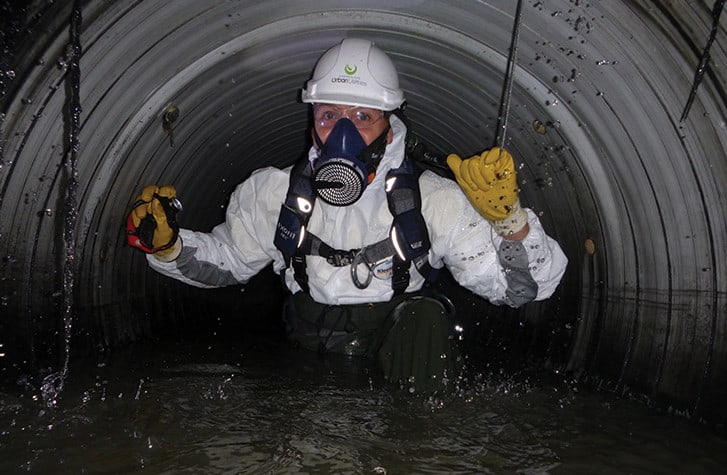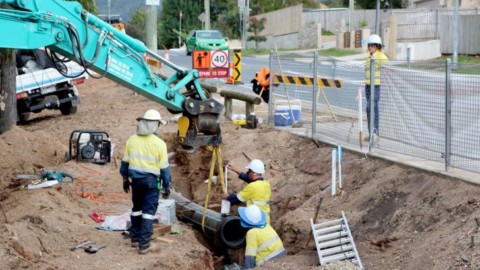Deep beneath the streets of Brisbane, and in the dead of night, one of Brisbane’s oldest sewer lines is getting a makeover in a project which still has many years to run but is already collecting awards for the innovative construction methods used.
Queensland Urban Utilities (QUU) has completed the first stage of a $130million upgrade to the S1 main sewer, using the latest trenchless technology to reline a 5.7km section of the historic 100 year old pipe.
The 5.7km sewer runs from James St in Fortitude Valley, winding its way north-east around the river to the Eagle Farm pump station in Brisbane, running under Kingsford Smith Drive, one of the busiest roads in Brisbane.
The project is one of the most unique sewer rehabilitations ever undertaken in Australia due to the age and depth of the pipe. The S1 main sewer carries 60 per cent of the city’s sewage, spans 1.5m in diameter and lies 20 metres, the equivalent of eight storeys, below the ground. It was the first major trunk sewer built in Brisbane and was constructed 100 hundred years ago, using traditional mining techniques available at the time. An unreinforced concrete pipe was constructed inside the tunnel in segments. Recent CCTV condition monitoring identified internal corrosion of the concrete pipe.
The first phase of the upgrades were carried about by sewer rehabilitation contractor Interflow, who implemented new technologies to overcome the challenges associated with the project.
Interflow used Ribline, a composite steel-reinforced high-density polyethylene liner, to reline the sewer. The liner was fed from a spool on the surface into the underground pipe segments.
Closing the road was not an option, so trenchless technology was used to go underground and reline the old concrete pipe with a new pipe made from polyethylene. This meant there was very little disruption to traffic and no need to dig up the road.
Works were completed during the night between 8pm and 5am to ensure the safety of workers and minimise traffic disruptions, as the maintenance holes used to access the sewer were located on the edge of a road or in the median, in high traffic volume areas.
Night construction also proved an advantage because flow levels in the sewer line are lower at night and gas levels are reduced.
The spooled liner was mobilised to site each night and removed by 5am each day in a precision operation which allowed the road to reopen.
Interflow and QUU also managed construction impacts of the upgrade by fast tracking the works with multiple crews working between Amy Street and Cooksley Street and using generators with in–built noise suppression.
Work methods were also reviewed daily to identify if any additional measures could be implemented to further reduce impacts.
The upgrade aims to extend the operational life of the pipe by at least another 50 years and cater for Queensland’s population growth.
The project began in March 2015 and will be delivered in several phases over four years with completion expected in 2019.
















